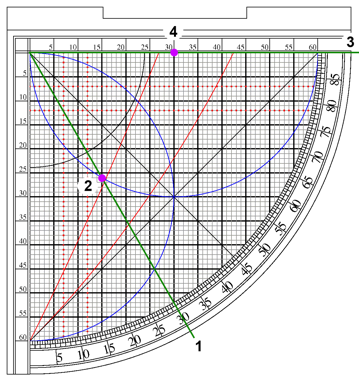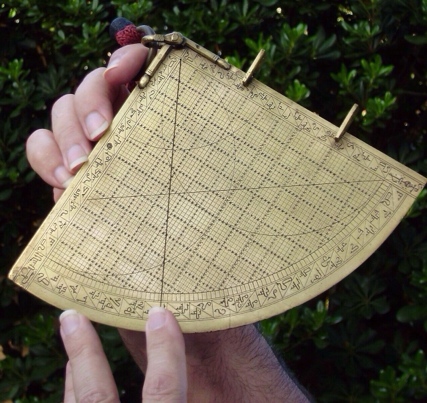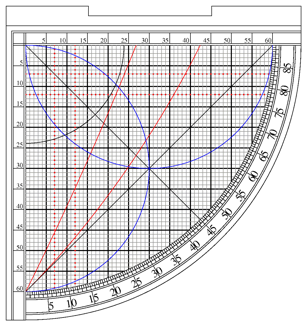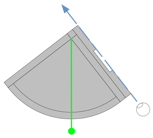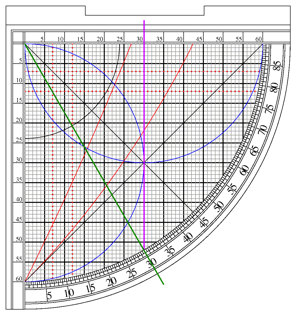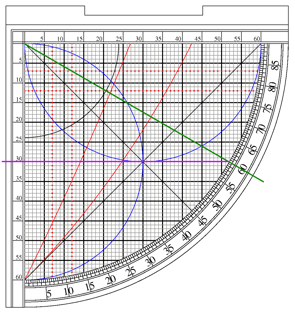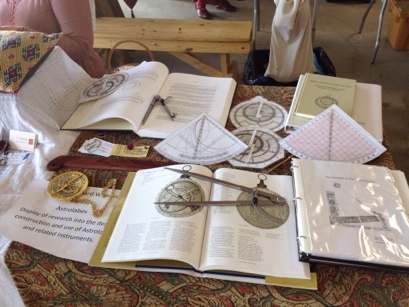Deconstructing the Sine Quadrant-Part 6: Summary and sources
- on 03.04.14
- Random Jottings, Sine Quadrant
- Comments Off on Deconstructing the Sine Quadrant-Part 6: Summary and sources
Links
The previous installments in this series can be found here:
Part One
Part Two
Part Three
Part Four
Part Five
Printable example Sine Quadrant
In the last 5 installments we have broken down the various parts and functions of the sine quadrant. I’ve now come to the end of what I currently know. So here are some references if you wish to dig deeper.
But first some questions I still have:
- Why do some examples of the sine quadrant have the Asr arcs reversed? On some examples I have seen (see below), the arcs extend from the 90 degree point down toward the cosign (vertical axis) not from 0 toward the horizontal sine axis.
- Why do many examples of the sine quadrant contain both a 12 unit and 7 unit Asr line? These give the same answer, there is no reason I can see for marking both. The traditional height of a gnomon in the Middle East is 7 feet, and the shadow square of an astrolabe often has a 7 unit side for that reason. But why 12 units then? Perhaps just because 12 divides up easily into halves, thirds and quarters?
- Why are the Asr lines always drawn on both the horizontal and vertical?
- What is the purpose of the line that is often drawn as a chord from 0 to 90? on several examples below the line is labeled, indicating some use, but what? I can find no reference.
- I can see why the angle scale is often labeled in both directions (to allow measuring distance from zenith); but why are the sine/cosine scales also marked in both directions?
Extant Sine Quadrants Online
http://en.wikipedia.org/wiki/Sine_quadrant
This is the Wikipedia entry for the Sine Quadrant. Not much information is available concerning the example in the pictures, but note that the Asr arc appears to be a later, and crudely done addition.
http://brunelleschi.imss.fi.it/galileopalazzostrozzi/object/TobiasVolckmerQuadrant.html
— This is a European variant. Note that this one has scales divided into 90 units as opposed to the usual 60. Note also the vernier scale on the degree arc. This allows for increased precision in measuring angles
http://iin-aina.blogspot.com/2011/04/nemu-kuadran-terbesar.html
— A quadrant of unusual size…
http://blogs.unpad.ac.id/kkltaringgultengah/sosial-budaya-desa-taringgul-tengah/
http://blogs.unpad.ac.id/kkltaringgultengah/files/2012/02/oo-1024×681.jpg
— A nice example of a wooden sine quadrant, the scales outside the degree scale show the zodiac and are for determining the position of the sun for finding the Solar declination.
http://www.mhs.ox.ac.uk/collections/search/displayrecord/?mode=displaymixed&module=ecatalogue&invnumber=48133&irn=1331&query=
http://www.mhs.ox.ac.uk/collections/imu-search-page/record-details/?TitInventoryNo=16856&querytype=field&thumbnails=on&irn=8355
http://www.mhs.ox.ac.uk/collections/imu-search-page/record-details/?TitInventoryNo=36052&querytype=field&thumbnails=on&irn=3334
http://www.mhs.ox.ac.uk/collections/imu-search-page/record-details/?thumbnails=on&irn=8351&TitInventoryNo=15598
http://www.mhs.ox.ac.uk/collections/imu-search-page/record-details/?thumbnails=on&irn=7066&TitInventoryNo=42166
http://www.mhs.ox.ac.uk/collections/imu-search-page/record-details/?thumbnails=on&irn=7083&TitInventoryNo=35285
http://www.mhs.ox.ac.uk/collections/imu-search-page/record-details/?thumbnails=on&irn=7465&TitInventoryNo=28781
http://www.mhs.ox.ac.uk/collections/imu-search-page/record-details/?thumbnails=on&irn=3343&TitInventoryNo=35612
http://www.mhs.ox.ac.uk/collections/imu-search-page/record-details/?thumbnails=on&irn=8350&TitInventoryNo=32534
http://www.britishmuseum.org/research/collection_online/collection_object_details.aspx?objectId=178957&partId=1&searchText=quadrant&images=true&page=2
http://www.mhs.ox.ac.uk/epact/catalogue.php?ENumber=35728&Level=
http://www.mhs.ox.ac.uk/epact/catalogue.php?ENumber=96841&Level=
http://www.mhs.ox.ac.uk/epact/catalogue.php?ENumber=94421&Level=
http://www.mhs.ox.ac.uk/scienceislam/objects.php?invnum=35285
http://collections.rmg.co.uk/collections/objects/43268.html
http://collections.rmg.co.uk/collections/objects/43269.html
http://collections.rmg.co.uk/collections/objects/43256.html
References
Bir, Atilla. (2008). Principle and Use of Ottoman Sundials. Retrieved from http://www.muslimheritage.com/topics/default.cfm?ArticleID=942
Charette, François, Mathematical Instrumentation in Fourteenth-Century Egypt and Syria. The Illustrated Treatise of Najm al-Din al-Misri, Brill, Leiden (2003).
Morley, William H., Description of an Arabic Quadrant, Journal of the Royal Asiatic Society of Great Britain and Ireland, Vol 17 (1860), pp. 322-330
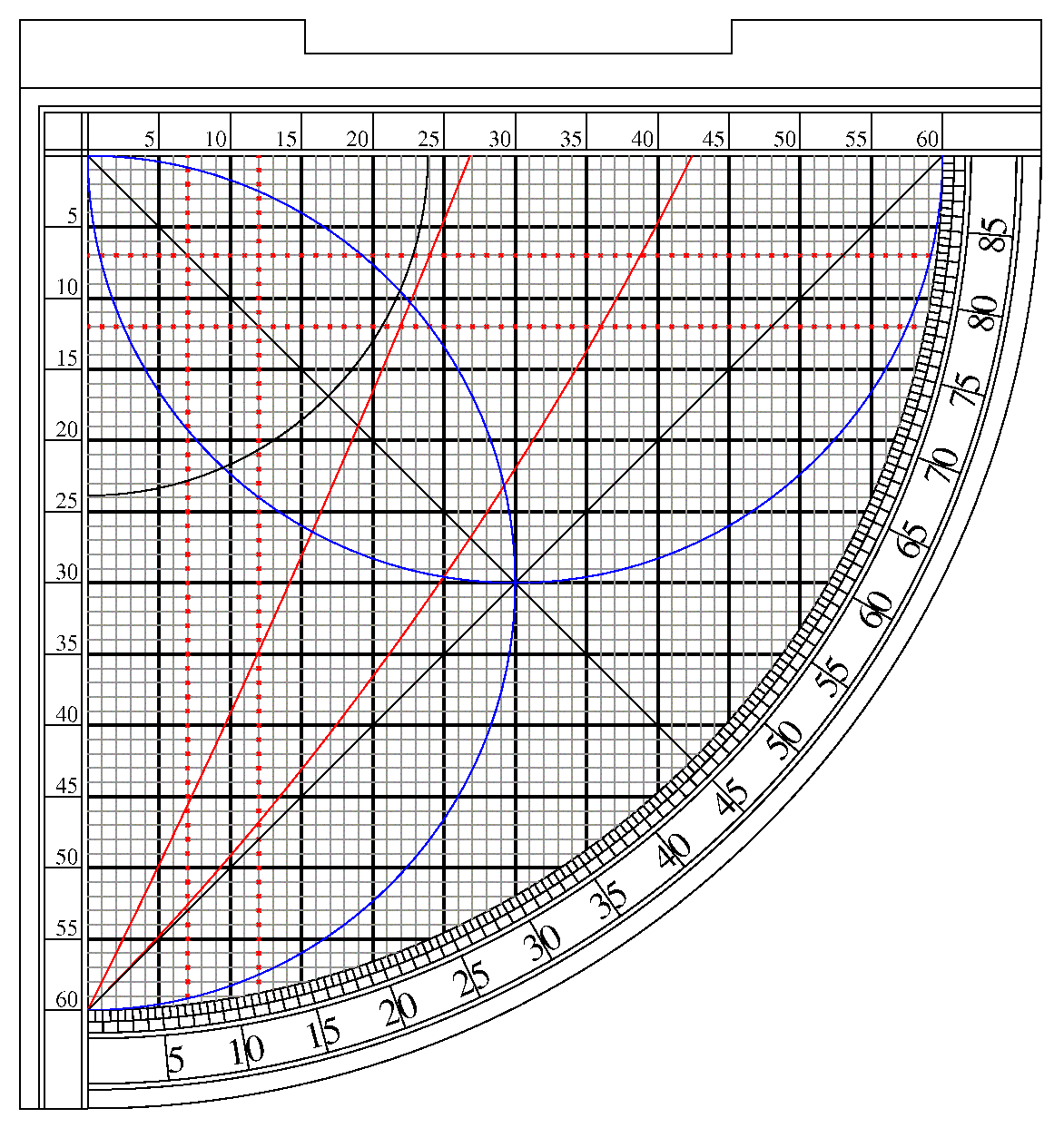
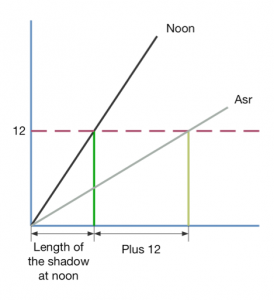
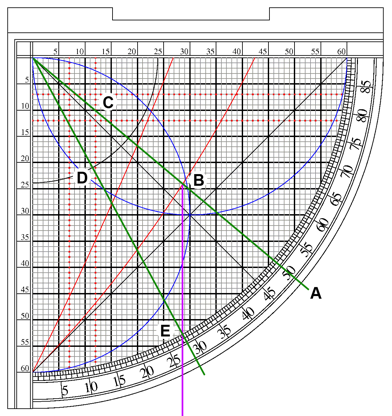
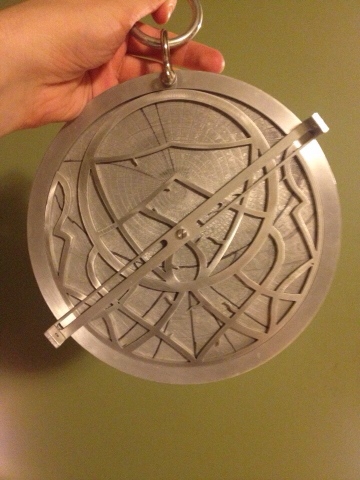
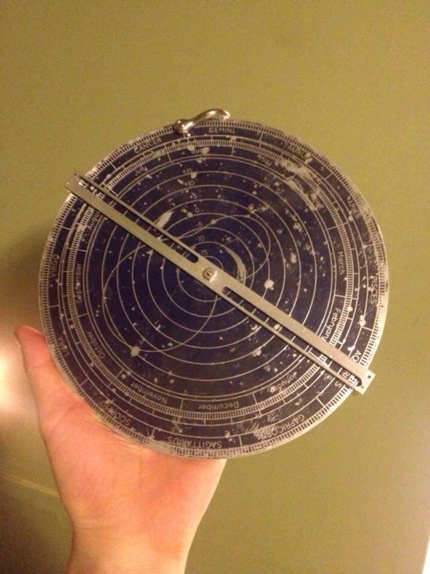
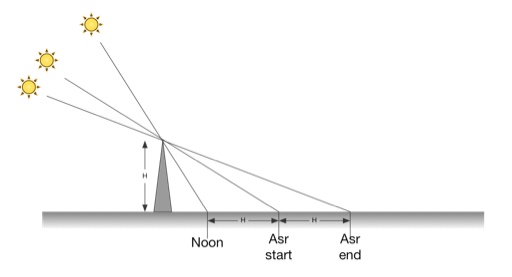
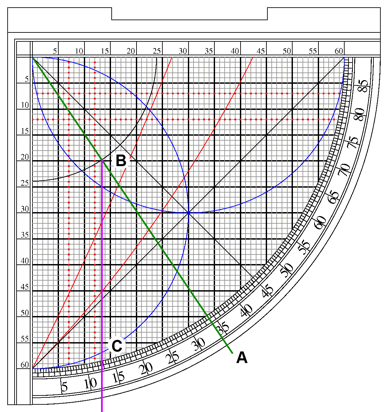
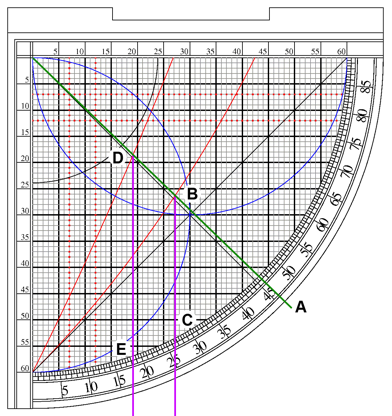
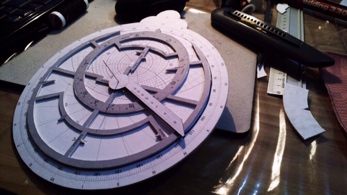
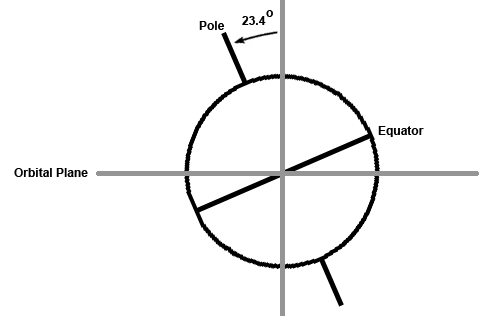
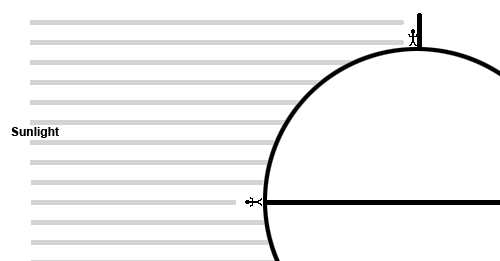
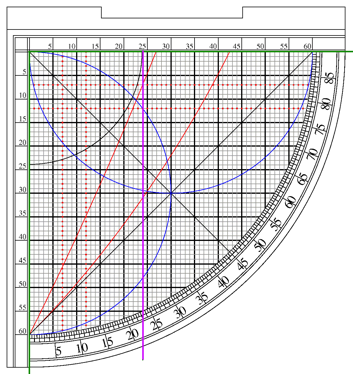
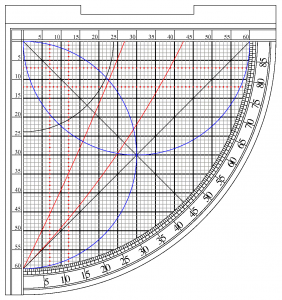
 mark a position on the cord. Think of it as memory storage for the device.
mark a position on the cord. Think of it as memory storage for the device.